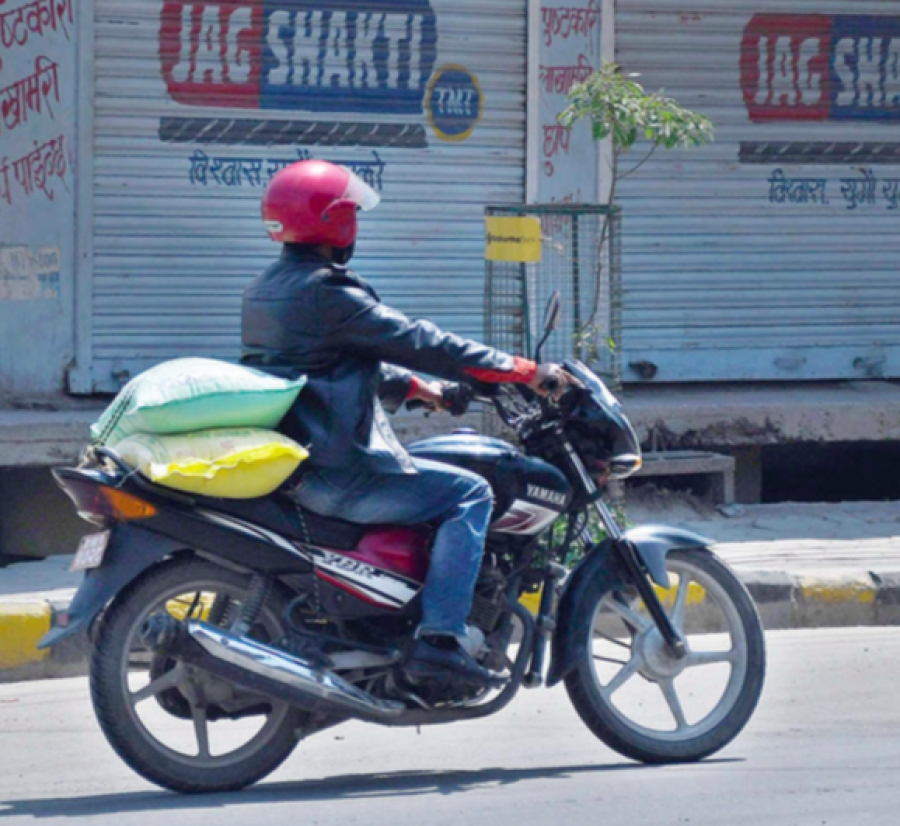National
Nepal seeks additional funding from donors as revenue shrinks amid Covid-19 crisis
Government is looking at funds between Rs69 billion and Rs104 billion, equivalent to 2 to 3 percent of the GDP, to bridge the resource gap, officials say.
Prithivi Man Shrestha
Nepal has sought additional funding—in the range of Rs69 billion to Rs104 billion— from international multilateral donors for the current and upcoming fiscal years to cover increased health care costs in the wake of the Covid-19 pandemic.
The amount being sought is equivalent to around 2-3 percent of the country’s gross domestic product. As of the fiscal year 2018-19, Nepal's GDP was Rs3.46 trillion, according to the latest International Monetary Fund report.
Nepal received $1.59 billion, equivalent to Rs194.52 billion, last fiscal year from both multilateral and bilateral donors, excluding international non-governmental organisations, according to the Development Cooperation Report -2018-19 published by the Finance Ministry.
“Our initial assessment shows that we will have an additional resource gap of 2-3 percent of GDP in the current and next fiscal years,” said Shreekrishna Nepal, chief of the international economic cooperation coordination division at the Finance Ministry. “We have sought additional support from donors to bridge this gap as our revenue is shrinking.”
The government’s revenue collection has been badly affected by the pandemic as almost all businesses have closed, transportation has been suspended and imports of essential goods have been halted due to the ongoing nationwide lockdown to contain the spread of the coronavirus.
Service sectors including tourism were the first casualties of the coronavirus, as they started to suffer long before the lockdown. All spring mountaineering expeditions, including Everest, were suspended, resulting in a major loss in foreign currency to state coffers.
Given the complications, the government missed its revenue target by around Rs200 billion as of mid-April.
“Against a target of Rs 798 billion, only Rs600 billion has been collected,” Yagya Dhungel, joint-secretary at the Finance Ministry, told the Post earlier this week.
In the absence of adequate resources, Nepal has been forced to divert its capital budget, including resources allocated to make payments for land acquisitions and vehicle purchases, towards procuring medical equipment and shoring up health care facilities.
Nepal, the Finance Ministry official, said that additional funding is also needed as the country will require more money for the health care sector this year and for economic recovery next year.
Late last week, Finance Minister Yubaraj Khatiwada called for additional assistance from donors during a video conference. Senior officials from the World Bank, Asian Development Bank, International Monetary Fund, Asian Infrastructure Investment Bank, International Finance Corporation and the United Nations had participated in the conference.
According to the Finance Ministry, Khatiwada asked donors to support Nepal through new support windows by easing conditions for assistance. He also sought a deferral of the loan payment deadline and debt relief.
On Monday, the International Monetary Fund (IMF) announced debt relief measures for 25 countries, including Nepal, for six months. Nepal’s loans to international institutions, as of December 2019, stood at $52.36 million, according to the IMF, and with the debt relief package, Nepal will not need to pay back instalments on the principal amount and interest for six months.
According to the Finance Ministry, Nepal had sought debt relief from the IMF for a period of at least two years.
Regarding additional funding, the Finance Ministry is still calculating the exact amount the government needs to seek from donors.
“The government, however, has already apprised donors of the overall resource gap,” Nepal told the Post. “We have written to all multilateral donors, and many of them have assured us of additional support.”
The government has already decided to accept assistance from the World Bank, Asian Development Bank and International Monetary Fund.
The Cabinet on March 29 had decided to accept $29 million from the World Bank for pandemic preparedness, rapid credit of SDR 78.5 million (1 SDR equals to 1.36 US dollar) from the International Monetary Fund, and $60 million from the Asian Development Bank under its Initial Response to Covid-19 fund.
But when it comes to bilateral donors, many are themselves struggling to cope with Covid-19.
“Despite the crisis they [donors] are facing, none of them has withdrawn their aid commitment so far,” said Nepal.
There are, however, concerns that donors may reduce their assistance amount, which could be below the threshold set by the Nepal government. The Development Cooperation Policy-2019 has set minimum thresholds for loans from donors. For concessional loans, there is a threshold of $10 million per project in place.
But Nepal, the Finance Ministry official, said that the threshold is only applicable during normal situations and that the policy has left the option open for lower amounts in difficult times.
According to Shanta Raj Subedi, a former finance secretary, the threshold ensures that the country receives support that is sizeable enough to be utilised in important projects.
“The policy itself does not bar the government from receiving funds that are lower than the threshold in situations like today’s,” said Subedi. “But we need to be careful, as removing the threshold altogether on the pretext of crisis could invite anomalies in the future. Ministries could start preparing small projects where resources will be fragmented and will yield few results.”
Nepal so far has reported 16 Covid-19 cases, while more than 1.9 million people have been infected worldwide with more than 120,000 deaths.




 5.55°C Kathmandu
5.55°C Kathmandu







%20(1).jpg&w=300&height=200)






